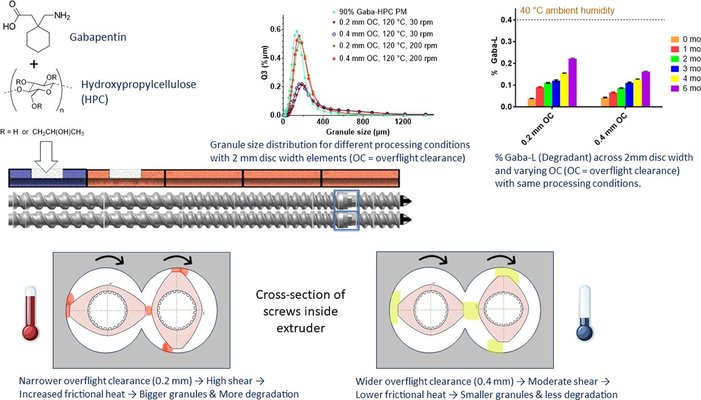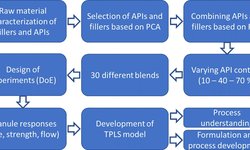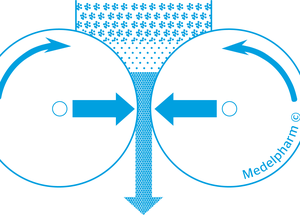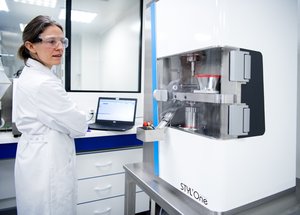Scientific papers
Twin-screw melt granulation (TSMG) relies on both dispersive and distributive mixing at the kneading zone to facilitate granule growth, underscoring the pivotal role played by kneading elements in TSMG. Despite extensive research into the impact of screw geometry in melt compounding, there remains a scarcity of literature on TSMG. In this study, the disc width for the kneading elements was reduced to 2 mm, in contrast to the standard 5 mm, aiming to assess whether varying overflight clearance (OC) could potentially alter the TSMG process paradigm.
The introduction of the new elements led to a reduction in peak shear at the kneading zone. However, compensatory measures such as higher barrel temperature and degree of fill (DoF) were necessary to achieve similar granule characteristics. Adjustments to DoF were accomplished through a modified screw configuration aimed at pre-densifying powders before kneading, coupled with processing at a lower screw speed. Despite the elevated barrel temperature, process optimization was conducted for thermally unstable gabapentin.
Utilizing the new elements, compressible granules (with Tensile strength > 2 MPa) containing low % GABA-L content were successfully produced, even with an increased OC of 0.4 mm. Stability testing under conditions of 40 °C and ambient humidity over a span of 6 months revealed that gabapentin remained stable (% GABA-L ≪ 0.4 %), despite the high barrel temperature of 120 °C.

Comments
No comments posted yet.
Add a comment















